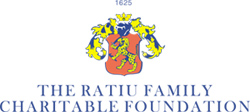UCL School of Slavonic and East European Studies, University College London, 7th Annual International Postgraduate Conference
Inclusion Exclusion
12:00 – 1:30: Panel A4: Sociolinguistics
Zuzana Tomková (University of Chicago): ‘Inclusion and exclusion in language and beyond: what to make of endangered European dialects in the field of language endangerment’
The last two decades have brought about a marked increase in both academic and popular interest in issues of language endangerment, language attrition/loss/shift, and efforts at possible revitalization of the endangered linguistic varieties. However, even a superficial look at the fast-growing literature on language endangerment and revitalization will reveal that some linguistic varieties which can be identified as endangered (Fishman 1991, Grenoble & Whaley 1998, etc.) are almost completely absent in the academic discourse. Endangered dialects of “strong” or “vital” languages form a major fraction of such varieties (Wolfram & Schilling-Estes 1995).
Taking endangered dialects of Slovak as an example, this paper seeks to examine the differences between perceptions of endangered dialects of “vital” European languages and those of endangered languages whose speakers are actively seeking to maintain and/or revitalize them (e.g. Maoris of New Zealand, Native Americans of North America, many Aboriginal communities of Australia, etc.). This examination pinpoints the importance of population integration (Mufwene 2001) as well as perceptions of sameness and difference in forming and developing group identities, so crucial to any group action, without which revitalization efforts are virtually impossible. Identifying the purist notion of “the Standard” as one of the key ideas in the Slovak linguistic understanding of self-identification, this paper proceeds to question the ideological assumptions about inclusion and exclusion underlying (the lack of) efforts towards linguistic preservation and revitalization in Slovakia and, quite likely, other countries in Central and Eastern Europe and beyond.
An attempt to understand why the evident dialectal linguistic loss
in Slovakia seems to be perceived as progress rather than decay leads
toward deeper theoretical questions concerning what exactly is lost in
contexts of language shift in general, and therefore, where cases like
that of Slovakia fit in the larger picture of language endangerment and
preservation.




